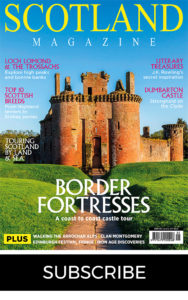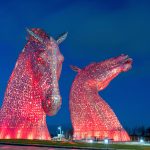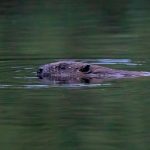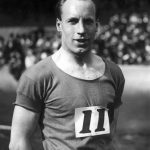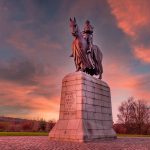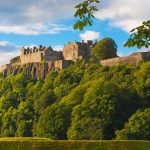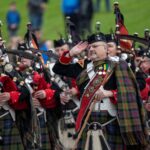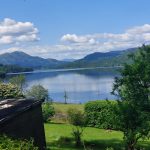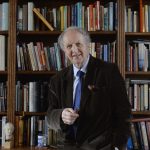MORE FROM SCOTLAND MAGAZINE
The Road Dance: An interview with Will Fletcher and John Mackay
We spoke to actor Will Fletcher and author John Mackay about their much-anticipated new film The Road Dance, set on the Isle of Lewis during the First World War. The Road Dance is the story of how love, bravery and the power of community can overcome life-changing tragedy
When watching The Road Dance for the first time, you get a strong feeling you know which way it will go. With the themes of war running throughout, in this case The Great War, which ravaged small communities such as the one depicted in the film, a viewer would lean towards thinking this would be the focus of the story. But they’d be wrong. The heartbreak and tragedy of sending young boys off to fight an enemy, thousands of miles away, for a seemingly unnecessary cause, makes for an emotional storyline itself. However, the real focus of the story is those left behind, and without giving too much away, how a series of tragedies affected one young girl and her family.
Based on the 2002 novel of the same name by Scottish news presenter John Mackay, which itself is loosely based on a true story, The Road Dance is set on the beautiful, but wild and rugged Isle of Lewis in the Outer Hebrides, which has sometimes been called ‘the edge of the world.’
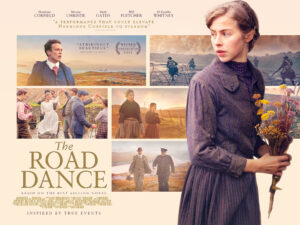
The drama and harshness of the landscape contributes to the atmosphere of the film, but it also helps to highlight the power of this small community that, living such an isolated life within a strict religious culture, must band together in times like these.
Kirsty Macleod, perfectly depicted by Hermione Corfield, is film’s strong female protagonist. She falls in love with Murdo MacAuley, a young boy from the community, played by Will Fletcher, and together they dream of leaving the island for the US, escaping the scrape of the land, the repression of the church and the inevitability of their lives if they stayed.
However, when Murdo is conscripted their plans are scuppered, and it is what happens to Kirsty after the villagers hold a grand road dance to send their young men off to battle that becomes the focus of the story.
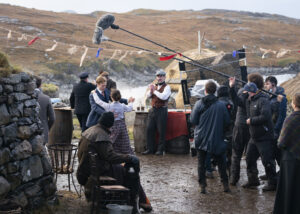
As well as beautiful scenery, inspirational acting and frequent dramatic twists, expect an emotional journey, so keep your tissues at the ready. Even if you have read the book, there may be some surprises along the way.
The Making of The Road Dance
Will Fletcher plays Kirsty’s love interest Murdo in The Road Dance. We spoke to him to find out more about the challenges and highlights of filming on the Isle of Lewis and why this is such an important story to tell.
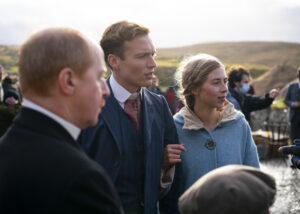
Can you tell us a bit about Murdo’s character and his journey in the film?
“Murdo has never really fitted in but he finds a connection with Kirsty, and they dream together of life in America. And then, like war does, when it comes it throws everything off course. An audience might think it’s going one way, and then after the road dance, the whole story changes.
What I loved about it as a project is that it is not a stereotypical war film. Instead it deals with the people left behind: a community ravaged by war. This film makes you realise what a life-changing affect the war had on communities like this. It changed everything”
What were the biggest challenges of filming on the Isle of Lewis?
“The biggest challenge was the weather. I have never experienced anything so dramatic, it changed about four times an hour. We arrived in October, and the weather got increasingly worse each day. Overall, though, the locations were incredible, and the weather certainly adds to the drama of the film. We’d be doing the first take and you’d see these enormous grey clouds racing towards us dramatically from the Atlantic. In some of the shots my face looked incredibly warped after a hailstorm, but then it is blue-sky weather in the shot! Wearing all that period costume on top of a hill was also very challenging – if the wind takes you when you’re wearing a cape, you’re out of there for sure!”
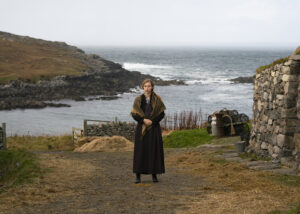
How did you go about researching your role?
“I had an extensive audition process, all during lockdown. When I was offered the role, I bought the book and found some great descriptions of Murdo. But everything changed when I arrived in the Outer Hebrides, and I realised the enormousness of where we were. I’m from the south of England, so I’m from a very different coastline. This was like a different world; it was so different to where I grew up.
“I sat in the accent for the whole time we were filming. A lot of the cast members grouped together and started practising together all the time; we practically lived in it. Initially I wanted to do a Hebridean accent but in the Outer Hebrides their first language is Gaelic, so they have a softer accent when they speak, which is very hard to do. I think I sound more like I’m from Edinburgh.”
What did you enjoy most about playing Murdo?
“Working on the set, Gearrannan Blackhouse Village, which is a museum, was amazing. It is a restored village, originally built in the 1800s, that has been lost in time. We filled it up, rethatched the rooves and sprinkled manure all down the side of the road and it became this living village. It was almost like living the film rather than actually acting it.”
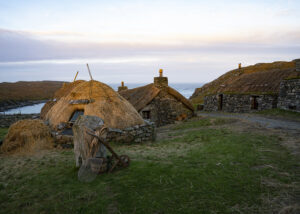
Why do you think The Road Dance is an important story to tell?
“What I love about it as a film is that it is character-driven. It doesn’t rely on the explosions, the pyrotechnics or the special effects. It is rooted in realism, and it is about one story in this world war, that affected so many people in so many different ways across the world. It tells the story of a young girl who was left behind, and how she rises up and shows strength and resilience in a world that is stacked against her.”
Did you have a favourite scene to film?
“The road dance itself. We had the whole cast together and we tried to keep spirits up and make it look like a party when a hurricane was coming in! There was also a swimming scene that was crazy to film, it was so cold. I had to just scream and run in.
“I loved the war scene too. They cleared an old quarry, and it was so atmospheric to act in. That was an amazing day, that all the boys really enjoyed.”
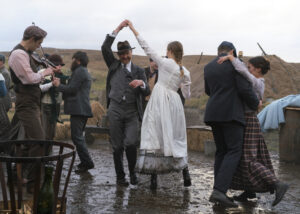
What was your favourite memory from making The Road Dance?
“That’s difficult, there really are so many. The cast all went for a day out in Harris, and we saw beautiful waterfalls and scenery. That was the last weekend, when the film had all been wrapped, so we were sad it was coming to an end, and it was good to have a day out altogether.
“I also loved working with Hermione Corfield, she led from the front from the beginning. I watched her work and I felt supported, so that was great. All the cast really were wonderful to work with. We all had to band together and catch lightening in a bottle, and I think that’s what we did.”
Meet the author: John Mackay
We were also lucky enough to catch up with the author of The Road Dance, John MacKay, about writing and researching the book, the draw of the Isle of Lewis, and how it felt to have his novel adapted for film.
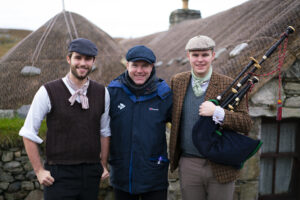
Your family are from the Outer Hebrides, do you visit often?
“I try to visit every year, often more than once. The Isle of Lewis is a touchstone for me. I still have aunts and cousins there, which adds to the pleasure of going.”
What do you think is so special about the Isle of Lewis?
“First and foremost, it is the land and seascape. The island beaches are beautiful and quiet and such a contrast to the hectic life of the city. Time slips away when you are sitting on a shoreline as the sea strokes the sand and the wind shifts around you. History is never far away, and I can see the marks of my forebears all around me and that gives me an incredibly strong connection.”
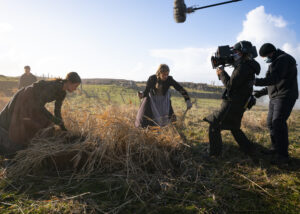
The story is loosely based on true events. How did you go about researching the book?
“I first heard the story – or what formed the core of my story – from a cousin in the Hebrides, and I was disbelieving at first, but it turned out to be true. I created a fictional story around it, but I couldn’t have written The Road Dance if I didn’t know that it was based on a truth. I researched old newspapers and found references to the original story. It was a very tragic case that happened some decades before my story, which is set around the outbreak of the First World War.”
What drew you to setting your novel on Lewis?
“It was the power of the story that drew me first. Everything else followed from there. I found that when I began writing The Road Dance, I had a strong sense of place and community because of my family connections and the time had spent there. After the positive reaction to The Road Dance, especially people’s appreciation of the setting, it made sense to set my other stories there. My most recent novel, Home (Luath Press 2021), could only have been set in the Western Isles because it charts the lives of different generations who pass through one home. That doesn’t really happen in urban areas.”
Is life still very different there compared to mainland Scotland/the cities?
“It has changed significantly since I first remember going and there are supermarkets and broadband and all that you would expect from modern living. It’s a different pace of life, though. But that’s part of the draw, I suppose.”
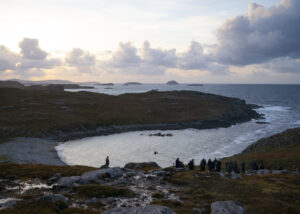
Why did you feel this was such an important story to tell?
“I’m a journalist by profession and what always grabs me is the story. I had an ambition to write a novel – as many of us do – and when I heard the story that formed the basis of The Road Dance, I knew that if I didn’t write it, I would never write anything.”
How does it feel having your book adapted for a film?
“It’s hugely exciting. It was a long road to get here with a lot of let downs along the way. At times I didn’t think it would happen and a lot of productions do fall by the wayside. But the American producers – Jim Kreutzer and Maryilene Blondell – were tenacious in wanting to make it happen because they believed so strongly in the story. The first time I saw the film on the silver screen was a special moment.”
This is an extract. Read the full feature, in the July/August issue of Scotland, out on 17 June. Buy your copy here.
The Road Dance is out in cinemas on now.
Read more:

SCOTLAND MAGAZINE
Published six times a year, every issue of Scotland showcases its stunning landscapes and natural beauty, and delves deep into Scottish history. From mysterious clans and famous Scots (both past and present), to the hidden histories of the country’s greatest castles and houses, Scotland‘s pages brim with the soul and secrets of the country.
Scotland magazine captures the spirit of this wild and wonderful nation, explores its history and heritage and recommends great places to visit, so you feel at home here, wherever you are in the world.
